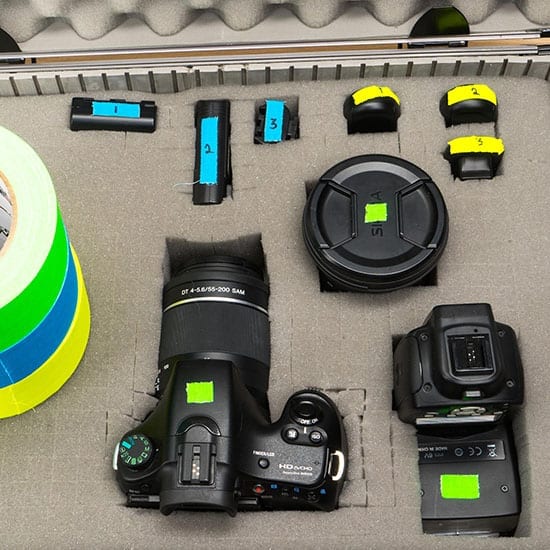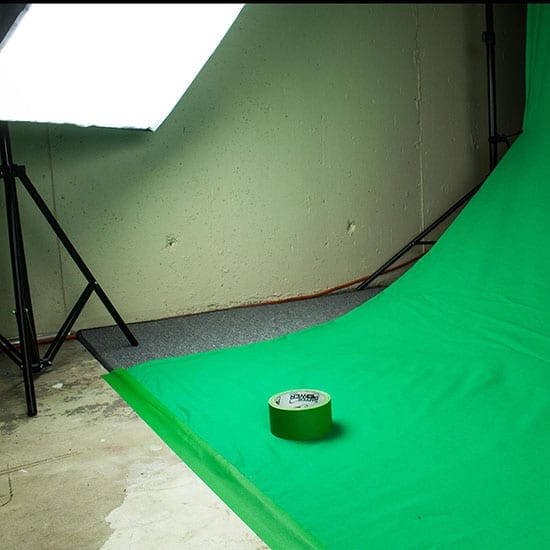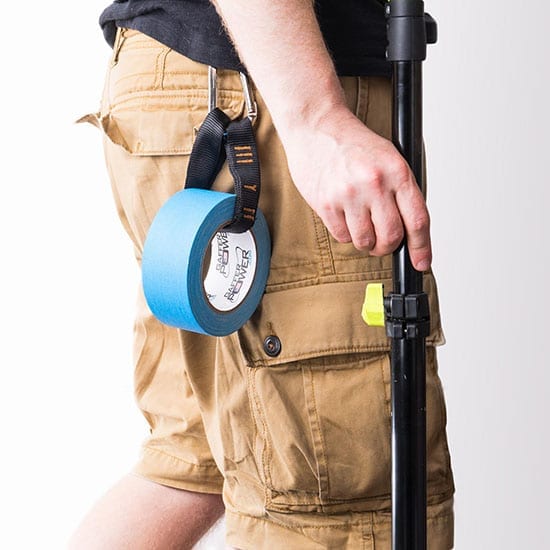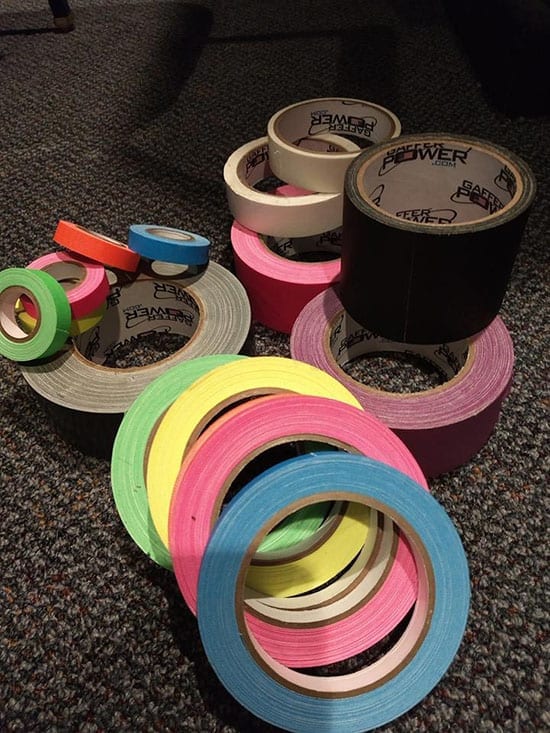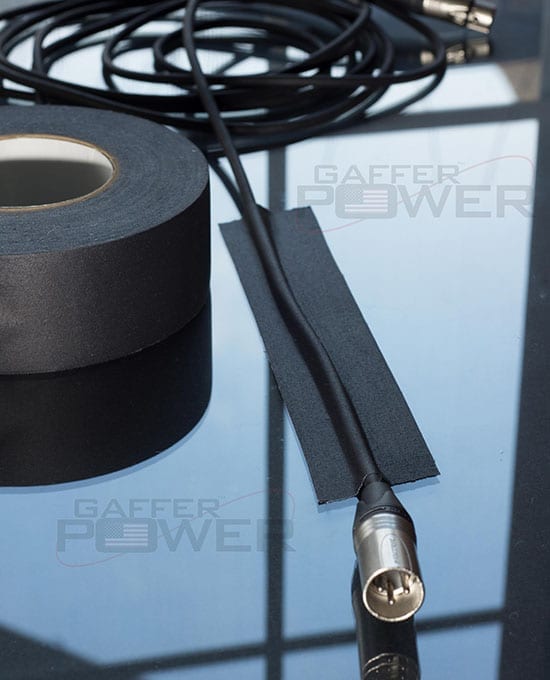Gaffer tape. That time-tested trademark of the filmmaking industry. Helpful for a whole tonne of reasons. This article offers tips and advice for getting the best out of every strip of gaffer tape.
One of the most critical keys to success is to be prepared. Popularized by the Boy Scouts and other volunteer and youth groups, the motto can serve anyone well.
In any situation, from minor inconveniences to full-blown disasters, the best are always prepared.
BEST GAFFER TAPE
What Is Gaffer Tape?
Gaffer tape (sometimes called gaff tape) is a type of cloth-backed pressure-sensitive adhesive tape used in filmmaking and stage work.
It is commonly silver or black but can also be found in other colors, including gold, blue, green, and red. The color usually denotes the thickness of the tape; for example:
– Black Gaffer Tape = 1 inch thick
– White Gaffer Tape = 3/4 inch thick
– Red Gaffer Tape = 3/8 inch thick.
It’s usually used for securing cables and wires in place while they are being taped down or on set as it can withstand high levels of stretching.
Gaffers use this type of sticky tape because it doesn’t leave residue behind when removed unlike other types of tapes such as duct or masking tape which should not be used by professional filmmakers.
From stashed-away toolboxes to full-on contingency plans, it’s important to be ready for any situation that might be thrown your way.
When you’re shooting video, specifically, there are many different types – events,, interviews, vlogging, short films, full-length features … just to name some – and different things to keep in mind.
With so many moving parts, it can be difficult to stay organized. When you’re filming a short, for example, you’ll have talent, props, lighting, and sound on your mind – just to name a few.
Event videographer? Your subjects are already lined up, but the space and lighting might not be as you envisioned. And that’s not even considering the gear required.
Whether it’s a one-day event or a weeks-long production, staying organized and being prepared are two things that can go a long way towards completing a successful project.
When it comes to being prepared, however, one thing you’ll see on any set or in any gear bag is gaffer tape. Productions both big and small rely on it for a variety of reasons.
It’s used in both live and filmed productions, popular for theatre, film, and television projects.
BEST GAFFER TAPE
Advantages of Using Gaffer Tape
• Gaffers tape is a strong, cloth-backed woven cotton cloth tape with low surface energy.
• Use for taping down cables and wires as well as many other uses.
• Keep cords organized and tangle-free.
• Hold down cables to avoid a disaster.
• Fix something that just won’t stay in place with a quick swipe.
• Gaffer tape is the perfect solution for both short-term and long-term repairs.
• Cut to length, it’s lightweight, slim, and very easy to use.
• There will come a time when you’ll need gaffer tape but you’ll be glad you have it!
Named for the gaffer, or chief lighting technician, many will go through meters and meters of this tape from the first shot to the last scene.
So, all the pros are using it. But why? Here are five of the top reasons that you’ll find gaffer tape on every set.
Gaffer Tape Is Versatile
Usually made from a cotton-backed adhesive, gaffer tape is strong and long-lasting, with an adhesive that sticks firmly. Since its backing is made of cloth, it isn’t reflective and can blend in seamlessly on set.
While it’s made to hold down cables to ensure they stay in place, gaffer tape can be used on set for other purposes as well:
1. Indicate Actors’ Marks On Stage Or Set
Since it’s non-reflective, the tape is virtually unnoticeable. It also comes in a variety of colors, so you can mark multiple actors’ placements without having to make different symbols or mark manually to indicate spots.
2. Repairs And Fixes On Set
From affixing props in place to masking holes, repairing curtains, and covering cracks on stage, there are dozens of uses to keep gaffer tape around. Patch up a bean bag weight, create a makeshift tripod plate, the list goes on!
3. Supporting The Lighting Team
The team that supports gaffer tape’s namesake will surely appreciate having it on hand as well.
Gaffer tape can hold lighting gels in place, hold projectors at a certain tilt, replace strain reliefs on connectors, and more.
4. Assisting The Sound Crew
Gaffer tape is also great to use to hold microphone packs in place, fix microphone stand positions, patch up speaker drivers, and other uses.
5. Helping Out Wardrobe And Stylists
Kim Kardashian herself has endorsed it as the best choice to keep, shall we say, her assets in place, and gaffer tape has definitely earned itself some more fans with that testament.
However, it’s a good quick fix for the wardrobe department when they need to fix or add grips to shoes, covering taps, covering small logos on clothes, and more.
When you’re starting out, you might find yourself fulfilling more than a couple of roles on the above list. It just makes gaffer tape that much more indispensable when you’re packing your gear for your production.
Gaffer tape is like the Swiss Army Knife of gear onset – if it needs to stick, chances are gaffer tape will do the job!
Gaffer Tape Is Strong
High quality gaffer tape holds and sticks to anything. Coated cables, dusty stages…anywhere you can think of on a set! (Note that when using cabling, however, any exposed wires should be taken care of with electrical tape, lest there be an incident.)
The adhesive is made to last whatever a production can throw at it. Despite its strength, gaffer tape can be easily ripped without the use of scissors or a blade, meaning that you can put it down quickly and easily.
In addition to creating a strong bond, gaffer tape can hold up against more than the regular wear and tear. It’s hard for the elements to wash it away, because…
Gaffer Tape Is Water-Resistant
Even though the tape is cloth-backed, the highest quality gaffer tape is made to withstand the elements. This makes it ideal for productions both indoors and outside, and won’t force you to resort to a rubberized or plasticized tape which can catch the light.
Gaffer Tape Leaves No Residue
With the heavy-duty properties of gaffer tape, you would think that the adhesive is sticky to the point of leaving its mark wherever it’s applied.
However, that isn’t the case at all! It’s easily removed without leaving a trace behind, making it a great choice when using it in spaces you need to leave in better condition than when you started.
No need to spend time scraping residue away, when it’s not even left there in the first place.
Gaffer Tape Isn’t Only Plain
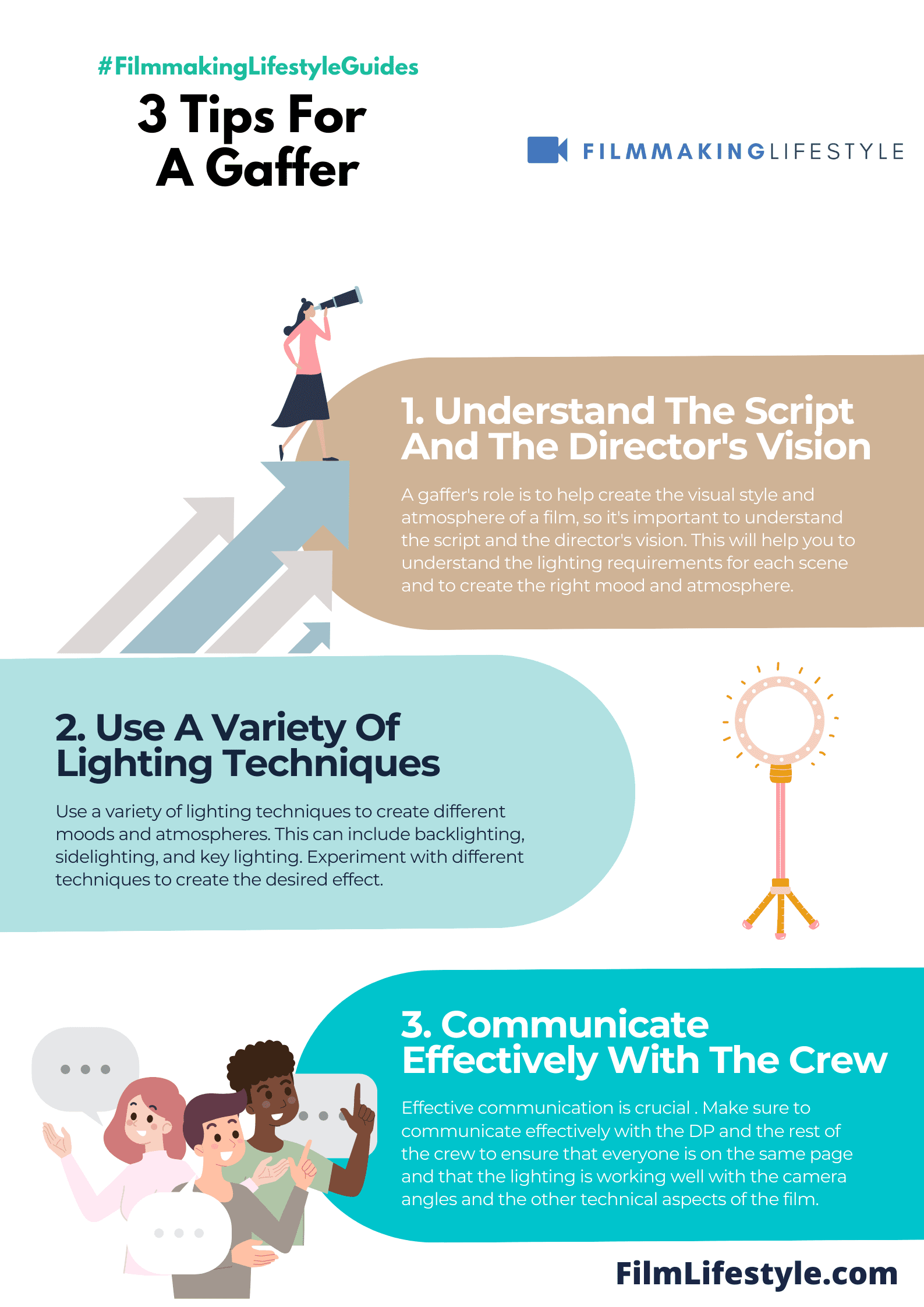
Gaffer tape comes in a wide variety of colors, which makes having several rolls on hand a good idea.
Color coding stage markings, labels, and any other directions onset can be immensely helpful when trying to keep your head on straight during production.
Having a variety of colors can help you avoid having to make a ton of labels that correspond to the use of the tape. However, it’s easy to write on, so even if you have only one or two colors on hand, you can still stay organized.
Another benefit to having brightly colored gaffer tape is that it can be easy for cast and crew to see from a distance.
Make sure possible pitfalls are easily seen by drawing attention to them using gaffer tape, especially when the tape is a fluorescent color.
Gaffer Tape – A Conclusion
Lightweight, versatile and indispensable – it’s easy to see why gaffer tape is found everywhere. When you’ve got about a few hundred things on your mind, trying to get your video production together, anything that makes your life easier is probably a good thing to try.
Amateurs and professionals alike swear by the stuff: you’d need at least a roll each of duct, masking, and hem tape each to do only a part of what gaffer tape does.
With a tape that can multitask like that, why not lighten up your gear bag and get yourself a roll or two?
We have Gear Buyer’s Guides on every type of Filmmaking Equipment!







